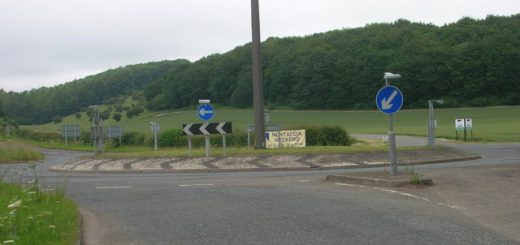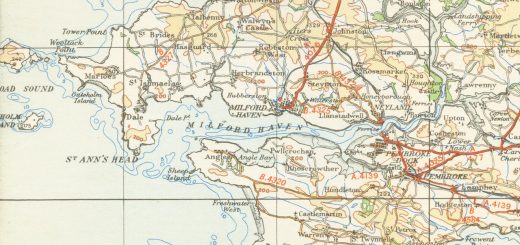Swarkestone Bridge
At just under a mile in length, the Swarkestone Bridge over the River Trent was originally built in the 13th century and is the longest stone bridge in England. Being a strategic crossing it has been the focus of military action during both the Civil War and the Jacobite Rebellion of 1745 and it is suggested that perhaps some of the soldiers involved hunt the bridge still.
 According to legend the bridge was commissioned in the 13th century by two beautiful noble sisters of the Bellamont family. The sisters were betrothed to a pair of knights who, during the engagement party were called away to a meeting of the barons. During the meeting, rain swelled the river making their return to Swarkestone over the fording point hazardous. Both knights missed the ford when they urged their horses into the river and they died whilst the sisters looked on. Devastated by the loss of their fiancés the sisters decided to have the bridge built. The cost of the bridge is said to have paupered them and unable to forget their loves, they never married. It is thought that the two sisters were buried in the same grave in Prestwold Church, Leicestershire. It is thought that the sisters may haunt the bridge on stormy evenings when the water is high.
According to legend the bridge was commissioned in the 13th century by two beautiful noble sisters of the Bellamont family. The sisters were betrothed to a pair of knights who, during the engagement party were called away to a meeting of the barons. During the meeting, rain swelled the river making their return to Swarkestone over the fording point hazardous. Both knights missed the ford when they urged their horses into the river and they died whilst the sisters looked on. Devastated by the loss of their fiancés the sisters decided to have the bridge built. The cost of the bridge is said to have paupered them and unable to forget their loves, they never married. It is thought that the two sisters were buried in the same grave in Prestwold Church, Leicestershire. It is thought that the sisters may haunt the bridge on stormy evenings when the water is high.
Civil War
On 5 January 1643, during the Civil War, Royalist Sir John Harpur unsuccessfully defended the bridge against a Parliamentarian assault from troops based in Derby and led by Sir John Gell. Less than a dozen died during the skirmish.
Jacobite Rebellion
On 4 December 1745 the Jacobite Army of Charles Edward Stuart reached Derby and an advanced party of seventy Highlanders were sent to secure Swarkestone Bridge and secure the crossing over the Trent. Six miles south of Derby, the bridge is generally accepted to be the southern most point reached by Bonnie Prince Charlie in his advance on London. Four hours later Government troops arrived to destroy the bridge. The Jacobite advanced force defended the crossing until 6 December 1745. Finding no evidence of support south of the Trent, the army of Highlanders turned around and started their long retreat which would eventually end at Culloden.
Ghosts
There have been several reports of people hearing ghostly shouts and the sound of horses hooves around the bridge. It is likely that the Jacobite force sent to the bridge would have been mounted cavalry and it has been suggested it is these troops that haunt Swarkestone. However, it could just as easily be soldiers associated with the Civil War.




Recent Comments